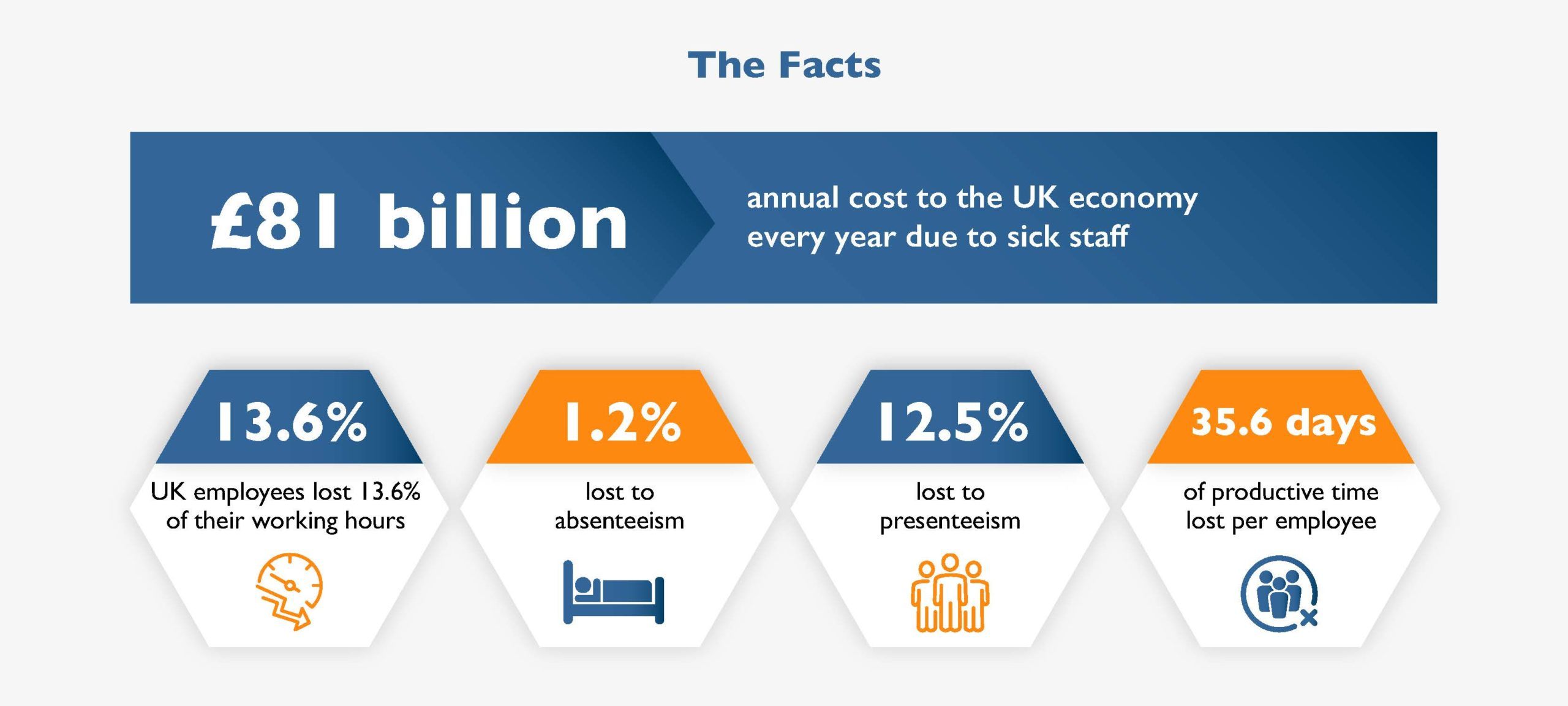The Issues

RAND Corporation and Britain’s Healthiest Workplace 2019 (Pre Covid-19)
The Economic Impact
Sick staff cost British firms £81 billion a year for the UK economy. This includes the economic impact of absence due to illness and presenteeism, which is people coming into work either physically or mentally ill.
A 2019 study revealed that employees lose on average 13.6% of their working hours every year due to absence or presenteeism. The study shows a 7% increase vs. 2018, and shows a growing issue that needs to be addressed.
There are many reasons why absenteeism and presenteeism occurs, and we work with you to uncover layers of complex information and insights to identify that root cause within your business, and from there, provide the best solutions, prioritising them in order of need and urgency.


The Growing Issues
- UK employees lost 13.6% of their working hours in 2019, which equals an average loss of 35.6 days of productive time per employee in 2019 which equates to approximately 6 weeks
- 1.2% of working hours were lost to absenteeism
- 12.5% to presenteeism
- 18.2% of employees reported low engagement at work
- 56.4% of employees suffer from at least one dimension of work-related stress with 35.1% of these employees reporting having felt unwell as a consequence
Much of this productivity loss could be avoided through identifying the root cause of absenteeism and presenteeism at work and then providing practical health and wellbeing initiatives.
We work with organisations in a pro-active rather than re-active way to enhance wellbeing and productivity at work.
source: RAND 2019
Covid-19 & The Changing Workplace
There are fewer adults travelling to work. 53% of adults in the UK between 28th October 2021 and 1st November 2021 did not travel to their usual place of work.
It’s no understatement to say that hybrid working has taken the world – or at least those who work in offices – by storm. If one factor is clear however, it is that the further uncertainty brought about by a change in working practices is creating additional pressures leading to stress and anxiety for employees. This can lead to depression for some employees, while for others it can manifest physically with lower immune systems or musculo-skeletal problems. Without doubt, the uncertainty affects employee productivity and business health.
Some people were furloughed whilst others worked from home due to personal or family circumstances. Key workers were obliged to remain at work in their workplace with every precaution taken to minimise the risks to that person of developing COVID-19.
Despite the challenges, the situation was black and white – everyone knew what was expected and how to behave.
The shift to a more relaxed approach however is creating its own challenges. There are companies who are overwhelmingly positive about hybrid working and those who dislike the concept.
Source: ONS

Ten areas to review to make hybrid work a success for you and your employees:
- Audit the health risks of job roles in your company
- How many days can people work in the office based on space and team needs?
- How will team meetings work?
- What technology do your hybrid and flexible workers need at home and at work?
- How will you ensure compliance with GDPR rules?
- Do you need to review compensation arrangements for hybrid and flexible workers?
- Do you need to consider extra services to support your employees?
- Train your line managers
- Talk to your employees and ask them for their input
- Remember, this shift is not a quick fix
